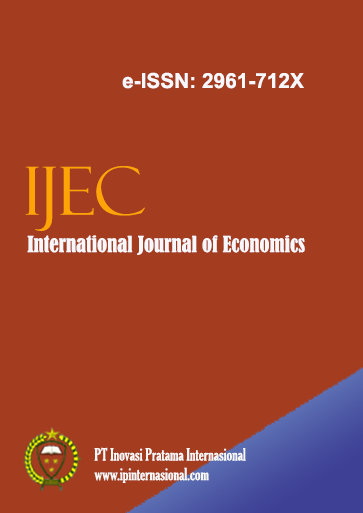Redefining Employee Commitment: The Role of Digital Work Flexibility and Work-Life Balance in Enhancing Public Service Efficiency
Main Article Content
Abstract
This study investigates the effect of digital work flexibility and work-life balance on employee commitment and its impact on public service efficiency at the Regional Revenue Agency (Bapenda) of Surabaya City. Using a quantitative approach with a cross-sectional design, data were collected from 115 civil servants through a structured questionnaire. Data analysis was performed using regression and mediation tests via Python-based statistical tools. The results indicate that both digital work flexibility and work-life balance significantly influence employee commitment. Furthermore, employee commitment fully mediates the relationship between the two independent variables and public service efficiency. This means that any improvements in work flexibility and balance will only lead to enhanced service performance if they are able to foster stronger employee commitment. The study highlights the importance of adaptive and human-centered work arrangements in improving service delivery in public sector institutions. These findings have practical implications for the design of flexible work policies and underscore the strategic role of psychological commitment in the effectiveness of digital transformation in public administration.
Downloads
Article Details

This work is licensed under a Creative Commons Attribution 4.0 International License.
References
Armstrong, M. (2017). "Armstrong's Handbook of Human Resource Management Practice." Kogan Page Publishers.
Armstrong, M. (2019). Armstrong's Handbook of Human Resource Management Practice. Kogan Page Publishers.
Bersin, J. (2014). Becoming irresistible: A new model for employee engagement. Deloitte University Press.
Bersin, J. (2017). Disruptions in HR technology: Executive summary. Deloitte University Press.
Bersin, J., & Feinzig, S. (2015). The datafication of HR. Deloitte University Press.
Budhwar, P., & Debrah, Y. (Eds.). (2013). Human resource management in developing countries. Routledge.
Capelli, P. (2019). The technology trap: Capital, labor, and power in the age of automation. Princeton University Press.
Cascio, W. F., & Boudreau, J. W. (2016). The Future of Work: We've Arrived. Where Are We Going? Industrial and Organizational Psychology, 9(4), 565–592.
Cohen, D. (2019). HR technology and the role of the CHRO. SHRM Foundation's Effective Practice Guidelines Series.
Davenport, T. H., Harris, J., & Shapiro, J. (2010). Competing on talent analytics. Harvard Business Review, 88(10), 52–58.
Deloitte. (2017). Rewriting the rules for the digital age: 2017 Deloitte Global Human Capital Trends.
Den Hartog, D. N., Boon, C., Verburg, R. M., & Croon, M. A. (2013). HRM, communication, satisfaction, and perceived performance: A cross-level test. Journal of Management, 39(6), 1637-1665.
Gupta, N. (2018). "Artificial Intelligence in Human Resource Management: Challenges and Opportunities." International Journal of Scientific Research and Modern Education, 3(2), 18131822.
Handoko, A. D., & Pratama, A. B. (2020). "Strategi Manajemen Talenta di Era Digital: Studi Kasus PT. Arutmin Indonesia." Jurnal Manajemen dan Bisnis, 17(2), 123-138.
Mariani, A., & Kusumawardhani, A. (2019). The Influence of Human Resources Management, Technology Utilization, and Work Motivation on Employee Performance in Industrial Revolution 4.0. In Proceedings of the International Conference on Industrial Engineering and Operations Management (pp. 1535-1546).
Marler, J. H., & Boudreau, J. W. (2017). An evidence-based review of HR Analytics. The International Journal of Human Resource Management, 28(1), 3-26.
Miles, M. B., Huberman, A. M., & Saldana, J. (2013). Qualitative data analysis: A methods sourcebook. Sage Publications.
Rothwell, W. J., & Kazanas, H. C. (2014). Mastering the instructional design process: A systematic approach (5th ed.). John Wiley & Sons.
Saks, A. M., & Haccoun, R. R. (2016). "Managing Performance through Training and Development." Cengage Learning.
Society for Human Resource Management (SHRM). (2019). HR technology: An overview.
Stone, R. I., & Deadrick, D. L. (2015). "Challenges and Opportunities Affecting the Future of Human Resource Management." Human Resource Management Review, 25(2), 139-145.
Strohmeier, S., & Piazza, F. (2015). Domain-driven data mining in human resource management: A review of current research. Expert Systems with Applications, 42(4), 1743-1759. World Economic Forum. (2018). The Future of Jobs Report 2018.

